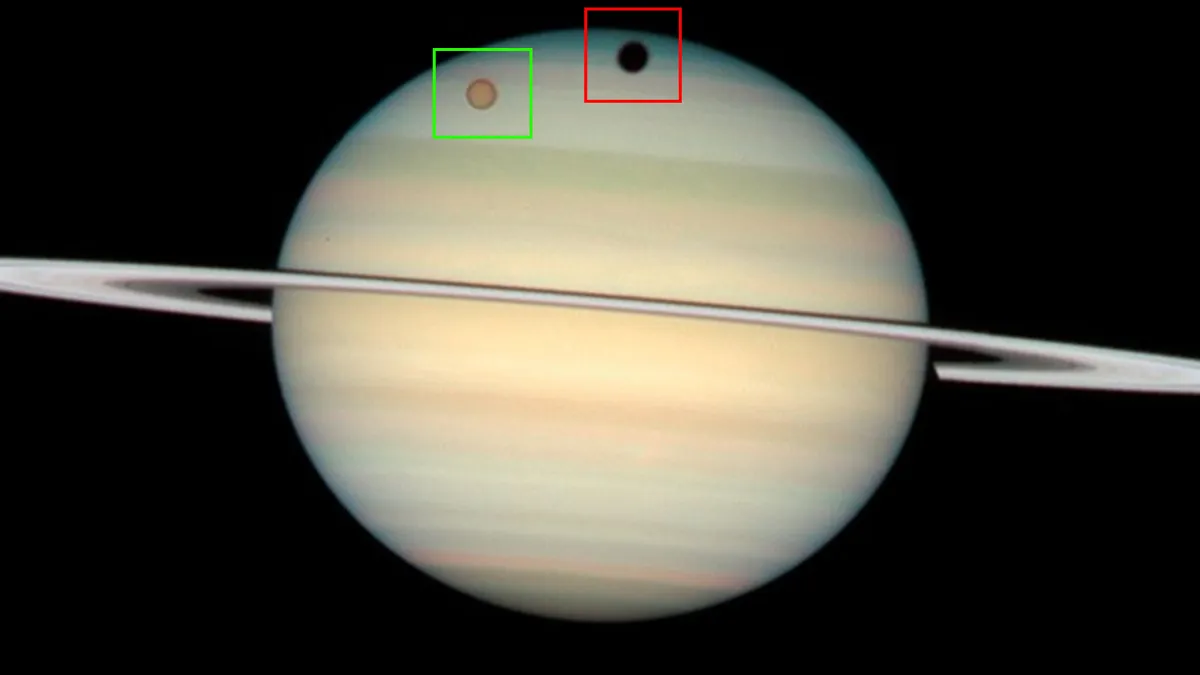
In the coming months, skywatchers will have a rare opportunity to observe a stunning celestial event as a giant shadow traverses the surface of Saturn. This phenomenon occurs when the shadow of Titan, Saturn's largest moon, passes over the gas giant, creating a visual treat that won't be seen again until 2040. Here's how you can catch this mesmerizing display from your own backyard.
Every 15 years, a remarkable alignment occurs between Saturn and Earth, allowing the planet's stunning rings to face our planet directly. This year, in March, the alignment was so precise that Saturn's super-thin rings completely vanished from sight, as reported by Live Science's sister site, Space.com. However, in 2032, the opposite will take place, providing a breathtaking view of Saturn's rings in their full glory.
Saturn's current orientation also has significant implications for its moon, Titan, which orbits the planet approximately every 16 days. During this period, Titan casts a large shadow on Saturn's surface, akin to the way the moon's shadow sweeps across Earth during a lunar eclipse. This phenomenon is not exclusive to Titan; other major moons of Saturn, such as Mimas and Rhea, also create shadows, although they are smaller and harder to detect.
As Earth remains aligned with Saturn, there will be a total of 10 visible transits of Titan's shadow, with three already having occurred. The upcoming transits are scheduled for:
July 2July 18August 3August 19September 4September 20October 6For precise timing and visibility, check resources like Sky & Telescope. Keep in mind that most transits will begin and conclude before sunrise for observers in North America.
To fully appreciate this celestial event, having a quality telescope with at least 200x magnification is essential. Websites such as TheSkyLive.com can help you locate Saturn in the night sky. It's advisable to plan ahead, as adverse weather conditions could obstruct your view of the transits.
As the year progresses, the duration of each transit will decrease, requiring more precise timing. For instance, on October 6, Titan's shadow will only be briefly visible during mid-transit, making it crucial to be ready at the right moment.
If you are fortunate enough to witness this extraordinary event, remember that Titan is not just any moon; it is the second-largest moon in our solar system, surpassed only by Jupiter's Ganymede. With a diameter of over 3,200 miles (5,150 kilometers), Titan is slightly larger than the planet Mercury and 50% wider than Earth's moon. Notably, it is the only moon, aside from Earth’s, that has been visited by a human-made spacecraft — the European Space Agency's Huygens probe landed on Titan in 2005 and continues to relay valuable data.
Even if you miss the impressive shadow transits, Titan will continue to pass in front of Saturn every 16 days until January 2026, after which it will cease transiting until 2040. So mark your calendars and prepare your telescopes for this once-in-a-lifetime opportunity to witness the beauty of Saturn and its magnificent moon, Titan.